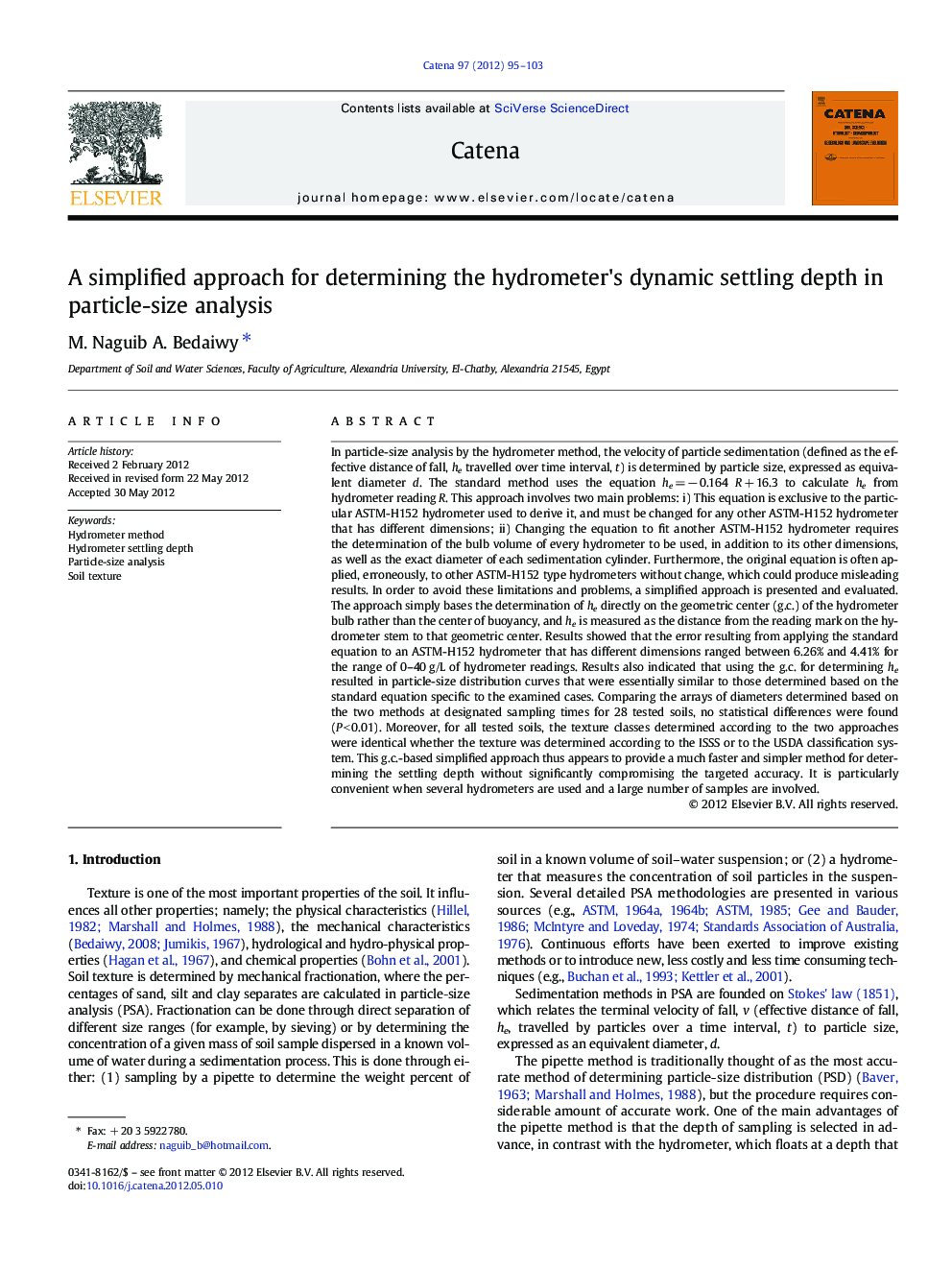| کد مقاله | کد نشریه | سال انتشار | مقاله انگلیسی | نسخه تمام متن |
|---|---|---|---|---|
| 4571769 | 1629255 | 2012 | 9 صفحه PDF | دانلود رایگان |

In particle-size analysis by the hydrometer method, the velocity of particle sedimentation (defined as the effective distance of fall, he travelled over time interval, t) is determined by particle size, expressed as equivalent diameter d. The standard method uses the equation he = − 0.164 R + 16.3 to calculate he from hydrometer reading R. This approach involves two main problems: i) This equation is exclusive to the particular ASTM-H152 hydrometer used to derive it, and must be changed for any other ASTM-H152 hydrometer that has different dimensions; ii) Changing the equation to fit another ASTM-H152 hydrometer requires the determination of the bulb volume of every hydrometer to be used, in addition to its other dimensions, as well as the exact diameter of each sedimentation cylinder. Furthermore, the original equation is often applied, erroneously, to other ASTM-H152 type hydrometers without change, which could produce misleading results. In order to avoid these limitations and problems, a simplified approach is presented and evaluated. The approach simply bases the determination of he directly on the geometric center (g.c.) of the hydrometer bulb rather than the center of buoyancy, and he is measured as the distance from the reading mark on the hydrometer stem to that geometric center. Results showed that the error resulting from applying the standard equation to an ASTM-H152 hydrometer that has different dimensions ranged between 6.26% and 4.41% for the range of 0–40 g/L of hydrometer readings. Results also indicated that using the g.c. for determining he resulted in particle-size distribution curves that were essentially similar to those determined based on the standard equation specific to the examined cases. Comparing the arrays of diameters determined based on the two methods at designated sampling times for 28 tested soils, no statistical differences were found (P < 0.01). Moreover, for all tested soils, the texture classes determined according to the two approaches were identical whether the texture was determined according to the ISSS or to the USDA classification system. This g.c.-based simplified approach thus appears to provide a much faster and simpler method for determining the settling depth without significantly compromising the targeted accuracy. It is particularly convenient when several hydrometers are used and a large number of samples are involved.
► Introduced method bases hydrometer's settling depth on the bulb's geometric center.
► Method is fast yet accurate compared with method based on center of buoyancy.
► No significant differences were found between the two methods.
► No differences in texture designation were seen between the two methods.
► Introduced method is appropriate when many hydrometers are used.
Journal: CATENA - Volume 97, October 2012, Pages 95–103